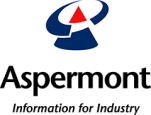The Australian Government, through the CSIRO and a government-backed body called AuScope, is working on the project. While work in this area has been in progress for 10 years, AuScope has been operating since mid-2007.
But it has only recently begun to achieve the level of cooperation required to attain the goal of interoperability of geological data that has been stored in different formats and systems.
The idea here is to promote the development of a universally common way of collecting, storing, analysing and transmitting data and information.
"To help us, we are using the most advanced web-based technology to make data systems interoperable and universally accessible so data can become more accurate and traceable," the CSIRO's Exploration and Mining acting chief Dr Steve Harvey said.
Dr Robert Woodcock, research group leader for computational geoscience at the CSIRO, said the need for an interoperable data storage system came from his department's work in geological modeling.
"There's a lot of software involved in what we do," he said. "The problem we ran into was that to produce these models in the first place, we need the observational data that is collected from across many tenements by mining companies and our own field guys.
"You need to bring all that together, and the costs of doing so when we've had them in all different formats are prohibitive," Woodcock said.
"They can at times exceed the cost of doing the simulation and modeling work itself. Hence we now have a reason to get involved in interoperability."
Woodcock was involved in this process while working in the private sector, and it was at this time that he and a colleague at the CSIRO came up with a plan for an international standard to exchange geoscientific information.
After about a decade of development, the result was a system called Geosciml, which has been adopted by the One Geology Project, an international initiative aimed at creating dynamic geological map data of the world and making it available via the web.
"At last count, One Geology had 70 or so geological surveys internationally involved in producing a completely interoperable map of the geological units of the world," Woodcock said.
"In the last two years, we've got the AuScope project up and running in Australia, which will provide us with sufficient funding to do this at a production grade, national level.
"There is quite a bit of i-dotting and t-crossing to go, to get from a demonstrator to a production-grade system, and that's the stage we're at now.
He said the intention would be for geologists to make the AuScope portal one of the first ports of call for their research. In other words, the aim would be to make AuScope a type of search engine, like a Google for geological information.
"One of the key benefits to the mining industry is that the technology being developed is available to the geological surveys," Woodcock told MNP.
"This means pre-competitive geoscientific information from all Australian states would be available in an interoperable form, greatly reducing the burden of access to exploration data on industry."
"But for it (the Geosciml format) to truly be an industry standard, mining companies need to choose to ask for things in this form," Woodcock said.
Bob Chamberlain, marketing and communication manager for the CSIRO's Exploration and Mining arm, told MNP that ideally, anyone would be able to access this data, which is already there, but currently not widely available.
"The long-term aim is to combine this with airborne hyper spectrial data so you end up creating a 3D hyper spectrial map of the entire Australian continent, and you can imagine how valuable that'll be to prospectors," Chamberlain said.
MiningNewsPremium.net






















